Knowledge Base
Enterprise Resource Planning (ERP)
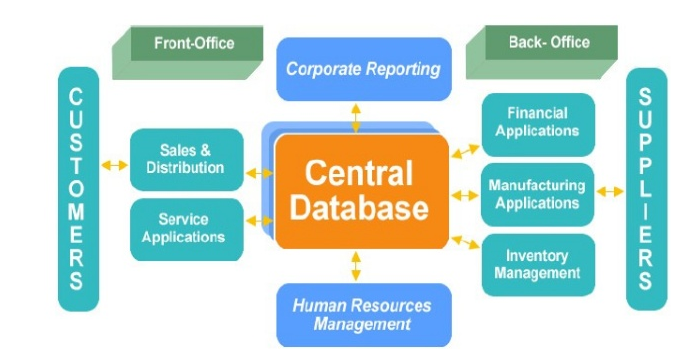
Enterprise resource planning (ERP) is a cross-functional enterprise system driven by an integrated suite of software modules that supports the basic internal business processes of a company. ERP gives a company an integrated real-time view of its core business processes such as production, order processing, and inventory management, tied together by ERP applications software and a common database maintained by a database management systems. ERP systems track business resources (such as cash, raw materials, and production capacity) and the status of commitments made by the business (such as customer orders, purchase orders, and employee payroll), no matter which department (manufacturing, purchasing, sales, accounting, and so on) has entered the data into the system. ERP facilitates information flow between all business functions inside the organization, and manages connections to outside stakeholders.
Enterprise system software is a multi-billion dollar industry that produces components that support a variety of business functions. IT investments have become the largest category of capital expenditure in United States-based businesses over the past decade. Enterprise systems are complex software packages that offer the potential of integrating data and processes across functions in an enterprise. Although the initial ERP systems focused on large enterprises, there has been a shift towards smaller enterprises also using ERP systems.
Organizations consider the ERP system a vital organizational tool because it integrates varied organizational systems and enables flawless transactions and production. However, an ERP system is radically different from traditional systems development. ERP systems can run on a variety of computer hardware and network configurations, typically employing a database as a repository for information.

Cloud Computing

Cloud computing refers to the act of delivering computing and storage services over the Internet CLOUD. The cloud is nothing but a set of remotely located dedicated servers, accessed through the Internet. These days, organizations either create their own CLOUD or obtain the service from companies that offer such services for a fee. These are virtual scalable servers located on the internet, and can be connected using an internet enabled device.
- Next Generation Architecture
- Lower Cost (Hardware, Software, Maintenance)
- Unlimited Storage space (Scalable)
- Improve computer performance
- Universal File Access
- Easier Group Collaboration
- Compatible Document Format
- Reliable Data storage
- Encapsulated change management
- Choice and Agility
Advantage CLOUD
Big Data Ecosystem

Big data involves two important new data management technologies
When combined, these big data technologies can support the management and analysis of the many types of electronic data that exist in organizations, regardless of volume, variety, or volatility.
- (a) An integrated set of open interfaces to all of the processes, data and metadata in the analytics ecosystem.
- (b) Support for all mainstream programming languages.
- (c) SQL access to external data sources and systems (such as Hadoop) via high performance connectors.
- (d) Data type extensions for big data.
- (e) Analytic function extensions and development kit for business analytics.
- (f) Support for third party and open source analytic function libraries.
- (g) Query optimizer that understands SQL extensibility for big data (data types, analytic functions and external tables) and the underlying physical data management and storage architecture.
- (h) Workload manager for handling complex, mixed and interactive workloads Customized storage managers for handling certain types of complex data.
- (i) Parallel processing architecture with high speed interconnect between nodes.
In summary, key requirements for a next generation analytics ecosystem for big data include:
Organizations will need to understand the benefits and costs of each of the options and choose the appropriate solutions that meet their business needs while at the same time supporting the workloads involved with high performance.
- Documents
- Existing relational databases (CRM, ERP, Accounting, Billing)
- E-mails and attachments
- Imaging data (graphs, technical plans)
- Sensor or device data
- Internet search indexing
- Log files
- Social media
- Telephone conversations
- Videos
- Pictures
- Clickstreams (clicks from users on web pages)
Various sources of data that needs to be processed and utilized by companies:
What all of this means is that if you're working in the enterprise application world, now is the time to start familiarizing yourself with alternative data storage options.
Search engine optimization (SEO)

SEO is the process of affecting the visibility of a website or a web page in a search engine's "natural" or un-paid ("organic") search results. In general, the earlier (or higher ranked on the search results page), and more frequently a site appears in the search results list, the more visitors it will receive from the search engine's users. SEO may target different kinds of search, including image search, local search, video search, academic search, news search and industry-specific vertical search engines.
- 1. Keywords
- 2. Tagging
- 3. Image Search Optimization (ISO)
- 4. Internal Linking
Successful SEO depends on various factors like:
Turnkey Project Management
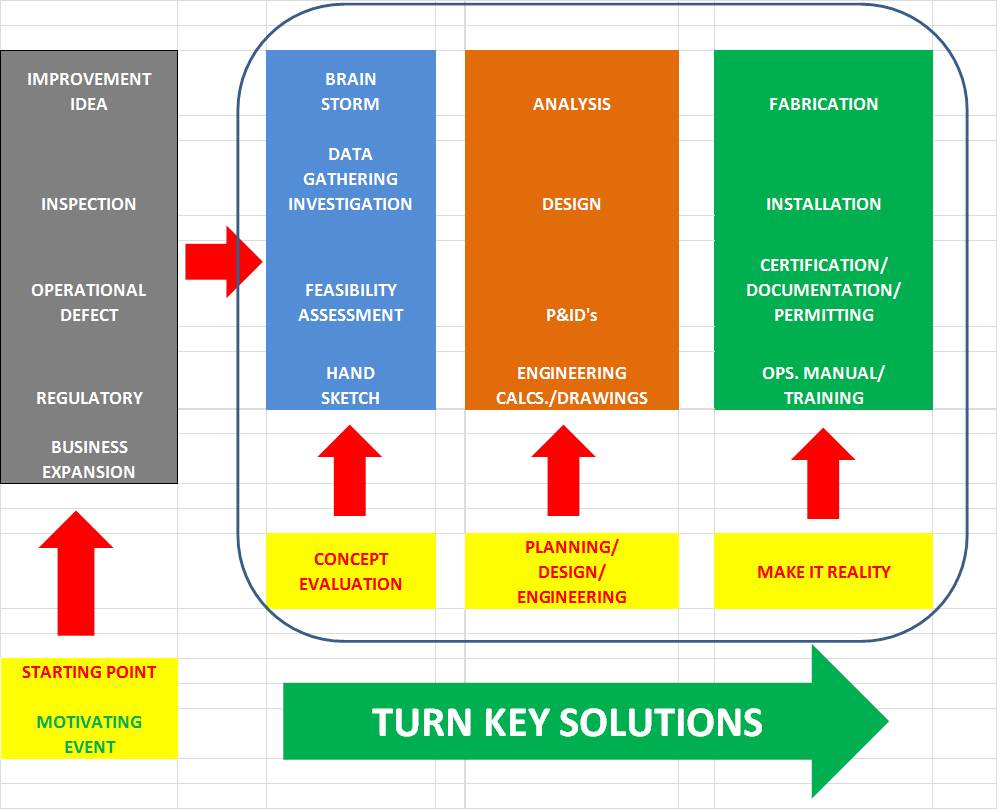
A turnkey or a turnkey project (also spelled turn-key) is a type of project that is constructed so that it could be sold to any buyer as a completed product. This is contrasted with build to order, where the constructor builds an item to the buyer's exact specifications, or when an incomplete product is sold with the assumption that the buyer would complete it.
The term turnkey is also often used in the technology industry, most commonly to describe pre-built computer "packages" in which everything needed to perform a certain type of task (e.g. audio editing) is put together by the supplier and sold as a bundle. This often includes a computer with pre-installed software, various types of hardware, and accessories. Such packages are commonly called appliances. A website with a ready-made solutions and some configurations is called a turnkey website.
GPS Tracking
GPS stands for Global Positioning System and was initially designed for the American military. It is a radio navigation system based on satellite communication. There are 24 satellites circling the earth. A GPS device receives signals from at least 3 satellites to determine its exact position on earth
GPRS (General Packet Radio Service) is a wireless data transfer technology over GSM networks (mobile phone network). It transfers data in packets and allows devices to be continuously connected to the Internet. Pegasus GPS Fleet & Asset Tracking uses GPRS to send data from the vehicles to Data Centre
GPS tracking systems are more than handy gadgets for technical gurus. They offer a host of useful features for business owners, families, and individuals. Here are 10 things you might not know about GPS tracking systems.
Apart from location, date and time, speed, standard reports like start-stop, and vehicle route etc. It also helps the Fleet owners to find the idling time of the vehicle. In short it acts as a productivity enhancement tool. Apart from the above there are intangible benefits due to customer satisfaction, security of vehicle, activity reporting, improved communications etc.
For car owners it acts as a multiple utility product. Now the car owners can have control over their car even when they are far away from it. They can feel more secure and certain about their cars
Today's GPS tracking systems are as compact as a small cell phone and can easily be tossed into the car, a briefcase or handbag
GPS trackers are no longer complicated technical gadgets for computer nerds only. GPS tracking devices are as easy to use as any pager or cell phone. In addition, GPS tracking software is now available as user-friendly online applications.
GPS tracking systems are becoming widely used as personal safety devices. Some GPS trackers by TrackingtheWorld even offer two-way voice communication for emergency communication.
Business Process Management (BPM)
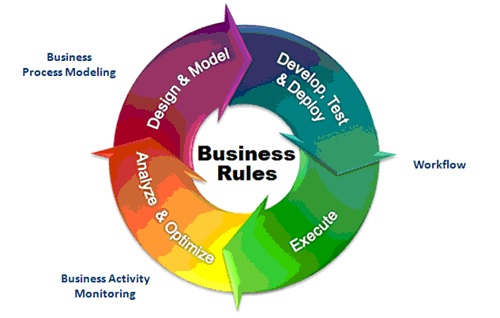
- 1. Design
- 2. Modelling
- 3. Execution
- 4. Monitoring
- 5. Optimizing
Business Process Management Life-Cycle:
The cycle continues till you achieve BPM excellence
- 1. Initial - No structured BPM w.r.t. responsibility of stakeholders
- 2. Awareness - Organization is aware of BPM. Planning started for defining the subject
- 3. Defined - BPM defined. Implementation is not yet started or is being implemented
- 4. Managed - BPM implemented. People Assigned, Communicated and Trained
- 5. Excellence - BPM is implemented enterprise-wide. A ongoing review and improvement process introduced to share lessons-learned and pro-actively address the change process
What is the BPM Maturity phase of your Organization?
Business Process Outsourcing (BPO)
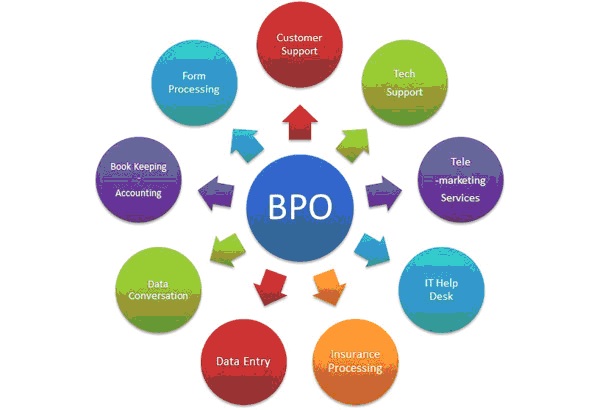
Business process outsourcing (BPO) is a subset of outsourcing that involves the contracting of the operations and responsibilities of specific business functions (or processes) to a third-party service provider. BPO is typically categorized into back office outsourcing - which includes internal business functions such as human resources or finance and accounting, and front office outsourcing - which includes customer-related services such as contact center services.
BPO that is contracted outside a company's country is called offshore outsourcing. BPO that is contracted to a company's neighboring (or nearby) country is called nearshore outsourcing. Often the business processes are information technology-based, and are referred to as ITES-BPO, where ITES stands for Information Technology Enabled Service. Knowledge process outsourcing (KPO) and legal process outsourcing (LPO) are some of the sub-segments of business process outsourcing industry.
Payment Gateway
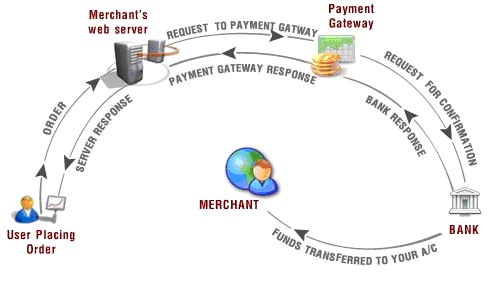
A payment gateway is an e-commerce application service provider service that authorizes payments for e-businesses, online retailers, bricks and clicks, or traditional brick and mortar. It is the equivalent of a physical point of sale terminal located in most retail outlets. Payment gateways protect credit card details by encrypting sensitive information, such as credit card numbers, to ensure that information is passed securely between the customer and the merchant and also between merchant and the payment processor
SMS Gateway
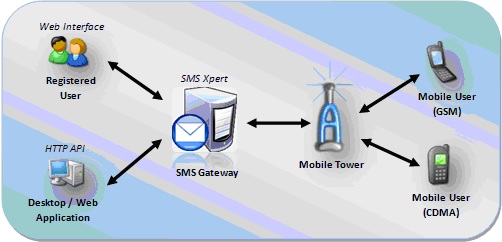
An SMS gateway is a telecommunications network facility for sending or receiving Short Message Service (SMS) transmissions to or from a telecommunications network that supports SMS. Most messages are eventually routed into the mobile phone networks. Many SMS gateways support media conversion from email and other formats.
Several operators have true fixed-wire SMS services. These are based on extensions to the ETSI GSM SMS standards and allow fixed-fixed, fixed-mobile and mobile-fixed messaging. These use frequency-shift keying to transfer the message between the terminal and the SMSC. Terminals are usually DECT-based, but wired handsets and wired text-only (no voice) devices exist. Messages are received by the terminal recognising that the CLI is that of the SMSC and going off-hook silently to receive the message.
OWASP
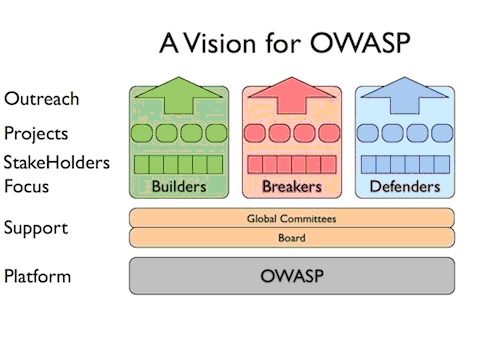
The Open Web Application Security Project (OWASP) is an open-source web application security project. The OWASP community includes corporations, educational organizations, and individuals from around the world. This community works to create freely-available articles, methodologies, documentation, tools, and technologies. The OWASP Foundation is a 501(c)(3) charitable organization that supports and manages OWASP projects and infrastructure. It is also a registered non profit in Europe since June 2011.
OWASP is also an emerging standards body, with the publication of its first standard in December 2008, the OWASP Application Security Verification Standard (ASVS).[1] The primary aim of the OWASP ASVS Project is to normalize the range of coverage and level of rigor available in the market when it comes to performing application-level security verification. The goal is to create a set of commercially workable open standards that are tailored to specific web-based technologies. A Web Application Edition has been published. A Web Service Edition is under development.
Agile / Scrum

AGILE
Agile software development refers to a group of software development methodologies based on iterative development, where requirements and solutions evolve through collaboration between self-organizing cross-functional teams. Agile methods or Agile processes generally promote a disciplined project management process that encourages frequent inspection and adaptation, a leadership philosophy that encourages teamwork, self-organization and accountability, a set of engineering best practices intended to allow for rapid delivery of high-quality software, and a business approach that aligns development with customer needs and company goals. Agile development refers to any development process that is aligned with the concepts of the Agile Manifesto. The Manifesto was developed by a group fourteen leading figures in the software industry, and reflects their experience of what approaches do and do not work for software development.
SCRUM
Scrum is a subset of Agile. It is a lightweight process framework for agile development, and the most widely-used one.
- A "process framework" is a particular set of practices that must be followed in order for a process to be consistent with the framework. (For example, the Scrum process framework requires the use of development cycles called Sprints, the XP framework requires pair programming, and so forth.)
- "Lightweight" means that the overhead of the process is kept as small as possible, to maximize the amount of productive time available for getting useful work done.
A Scrum process is distinguished from other agile processes by specific concepts and practices, divided into the three categories of Roles, Artifacts, and Time Boxes. These and other terms used in Scrum are defined below.
Scrum is most often used to manage complex software and product development, using iterative and incremental practices. Scrum significantly increases productivity and reduces time to benefits relative to classic "waterfall" processes. Scrum processes enable organizations to adjust smoothly to rapidly-changing requirements, and produce a product that meets evolving business goals.
An agile Scrum process benefits the organization by helping it to
- Increase the quality of the deliverables
- Cope better with change (and expect the changes)
- Provide better estimates while spending less time creating them
- Be more in control of the project schedule and state